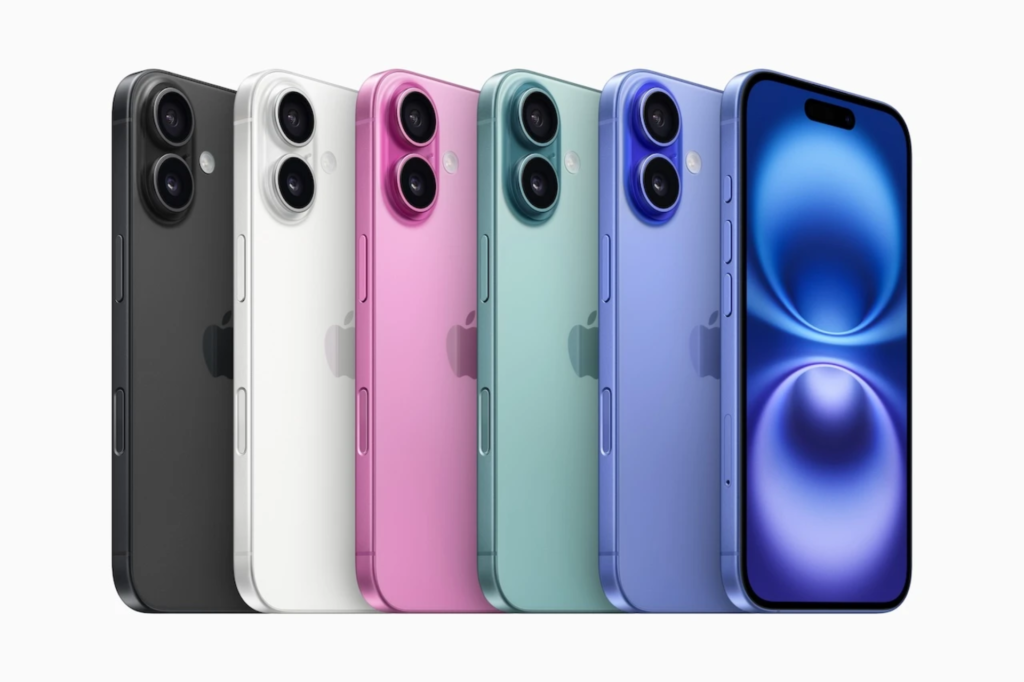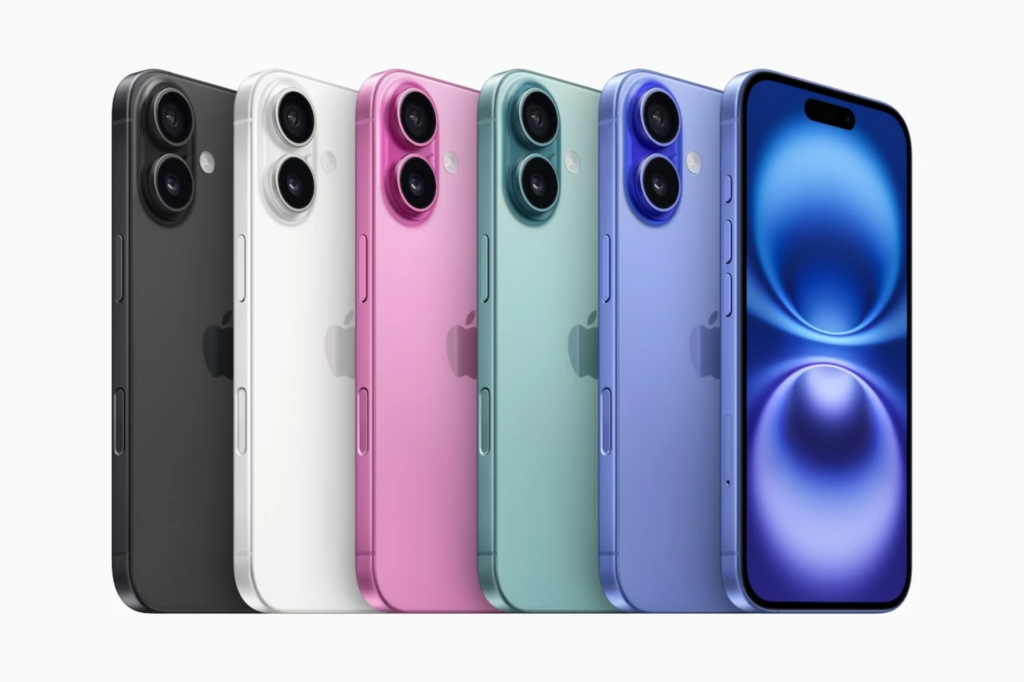Which iPhone 16 Is Right for You? A Closer Look at the iPhone 16, 16 Plus, 16 Pro, and Pro Max
Apple’s September event has once again brought us exciting new iPhones, discover the iPhone 16, iPhone 16 Plus, iPhone 16 Pro, and iPhone 16 Pro Max. If you’re planning to upgrade to one of these new models but are unsure which is the best fit for your needs, you’ve come to the right place. This guide will give you a detailed breakdown of the differences between the iPhone 16 and iPhone 16 Pro, helping you make an informed decision.
Both phones show notable upgrades from the previous models, but there are key differences in display, camera capabilities, processing power, design, and additional features that set them apart. Let’s explore each feature to help you decide which one is right for you.

1. Display: Size, Quality, and Refresh Rate
One of the first things you’ll notice when comparing iPhones is the display, and while both the iPhone 16 and iPhone 16 Pro feature stunning Super Retina XDR displays, there are a few differences worth noting.
- iPhone 16: The iPhone 16 comes with a 6.1-inch display. This size has become the standard for most iPhone users, providing a comfortable balance between usability and portability. The iPhone 16’s display is excellent, offering vibrant colors, deep blacks, and high contrast thanks to OLED technology. It also supports HDR, ensuring great video playback whether you’re watching a movie or streaming in high quality. However, the iPhone 16’s display is capped at a 60Hz refresh rate, which is fine for most users but doesn’t offer the same smoothness as the Pro model.
- iPhone 16 Pro: The Pro version bumps up the screen size slightly to 6.3 inches. While it’s not a dramatic increase, it can offer a bit more real estate for tasks like reading, gaming, or watching videos. What really sets the Pro’s display apart is its ProMotion technology, which supports refresh rates up to 120Hz. This higher refresh rate makes animations, scrolling, and even gameplay feel significantly smoother compared to the standard iPhone 16. If you’re someone who notices and values the fluidity of your phone’s interface, this might be a key reason to opt for the Pro model. Additionally, the iPhone 16 Pro has an Always-On display, which shows key information like the time and notifications even when your phone is locked, without draining too much battery.
Both models come with Apple’s Ceramic Shield technology, which offers superior protection against drops and scratches. They also feature True Tone, HDR support, and the P3 color gamut, ensuring accurate and vibrant color reproduction.
2. Camera System: A Big Leap in Pro Features
The camera is one of the most important features of modern smartphones, and it’s an area where Apple consistently pushes the envelope. Both the iPhone 16 and iPhone 16 Pro come with excellent camera systems, but the Pro offers significant advantages, particularly for photography enthusiasts or professionals.
- iPhone 16: The iPhone 16 sports a dual-camera setup, which includes a 48-megapixel Fusion main camera and a 12-megapixel ultra-wide lens. This setup is great for everyday photography, offering excellent image quality and versatility. The 48MP sensor allows for 2x optical zoom and superb clarity, while the ultra-wide lens lets you capture more of the scene, making it perfect for landscape shots or tight spaces. The Night mode is also present, allowing you to take impressive photos in low-light conditions. However, the optical zoom range is limited to 2x, and the video features, while good, lack some of the advanced capabilities of the Pro model.
- iPhone 16 Pro: The Pro model, as expected, takes things up a notch. It features a triple-camera system, which includes a 48-megapixel Fusion main camera, a new 48-megapixel ultra-wide camera, and a 12-megapixel telephoto lens. The telephoto lens is one of the key upgrades, offering 5x optical zoom, which allows you to get much closer to your subject without losing image quality. This is a significant advantage for photographers who often shoot distant subjects like wildlife or events. Additionally, the Pro model features second-generation sensor-shift optical image stabilization, which greatly reduces blurring from camera shake, particularly useful in low-light situations or when zooming in.
The Pro also supports Apple ProRAW, which gives you more control over your photos by preserving more data, allowing for extensive editing without sacrificing quality. Night mode portraits are another feature exclusive to the Pro, enabling you to capture beautifully lit portrait shots even in dark settings.
When it comes to video, both models can shoot 4K Dolby Vision video, but the Pro model pulls ahead again with support for up to 120 frames per second (fps) in 4K, enabling you to capture buttery smooth slow-motion footage. The iPhone 16 Pro also offers advanced video features like Academy Color Encoding System (ACES), log video recording, and ProRes video recording, which are typically used in professional filmmaking. While these features might not be necessary for the average user, they’re a game-changer for content creators and professionals.
The microphone system is also improved on the iPhone 16 Pro, featuring a studio-quality four-microphone array, which allows for multi-track audio recording. This is perfect for anyone who records podcasts or conducts interviews on their phone. In contrast, the standard iPhone 16 features a more basic microphone system.

3. Processing Power: A18 vs. A18 Pro
Apple is known for equipping its devices with some of the most powerful processors in the industry, and this year is no different. Both the iPhone 16 and iPhone 16 Pro are powered by new chips, but the Pro model gets a slight performance edge.
- iPhone 16: The iPhone 16 comes with the A18 chip, which features a 6-core CPU, 5-core GPU, and a 16-core Neural Engine. This chip is incredibly fast and efficient, capable of handling just about anything you throw at it, from everyday tasks like browsing the web and messaging to more intensive activities like gaming and photo editing. The Neural Engine is particularly useful for tasks involving artificial intelligence and machine learning, such as voice recognition and computational photography.
- iPhone 16 Pro: The iPhone 16 Pro, on the other hand, is powered by the A18 Pro chip. It features the same 6-core CPU as the A18 but adds an extra core to the GPU, making it a 6-core GPU. This additional GPU core provides a boost in graphics performance, which is especially beneficial for gaming, video editing, and other graphics-intensive tasks. The A18 Pro chip also includes enhancements that improve power efficiency, meaning the Pro model can handle demanding apps while maintaining battery life.
Both models feature 8GB of RAM, ensuring that multitasking is smooth and apps run efficiently. Whether you’re switching between apps, running multiple programs, or editing photos and videos, both phones offer more than enough power to handle it.
4. USB Speed and Charging
With the shift to USB-C across the iPhone lineup, both the iPhone 16 and iPhone 16 Pro support faster charging and more convenient connectivity. However, the iPhone 16 Pro has a distinct advantage when it comes to data transfer speeds.
- iPhone 16: The standard model supports USB 2.0, which offers typical data transfer speeds that most users are familiar with. This will be fine for those who occasionally transfer files between their phone and other devices but don’t need blazing-fast speeds.
- iPhone 16 Pro: The Pro model supports USB 3.0, which allows for data transfer speeds up to 20 times faster than USB 2.0. This makes a significant difference for content creators or professionals who frequently move large files, such as high-resolution videos or RAW photos, from their phone to a computer.
In terms of charging, both models can achieve 50% charge in 30 minutes using a 20W adapter. This fast-charging capability ensures that even if you’re running low on battery, you can quickly get back up to a usable level.
5. Design and Build: Premium Materials and Colors
The design of the iPhone 16 and iPhone 16 Pro maintains the sleek and minimalist aesthetic Apple is known for, but there are differences in materials and color options.
- iPhone 16: The iPhone 16 is built with an aluminum frame and a glass back, offering a light yet durable feel. It’s available in a range of vibrant colors, including ultramarine, teal, pink, black, and white. These colors are fun and give the phone a fresh, playful look. The iPhone 16 weighs around 6 ounces, making it easy to carry and handle.
- iPhone 16 Pro: The Pro model, however, is constructed with a titanium frame, giving it a more premium and sturdy feel. The matte texture of the glass back adds to its refined appearance. The Pro is available in more muted, professional colors, such as desert (gold), natural (silver), white, and black. It’s slightly heavier than the standard model, weighing just over 7 ounces, which adds to its sense of durability and high-end quality.

Both models are equipped with an Action button, which lets you quickly access functions like the flashlight, camera, or voice memos with a single press.
6. Battery Life: All-Day Performance
One of the most important features for many users is battery life. Apple has made improvements across the board in this area, but once again, the Pro model comes out on top.
- iPhone 16: The iPhone 16 offers up to 22 hours of video playback, which is more than enough to get most users through a full day of moderate to heavy use. Whether you’re streaming videos, using apps, or browsing the web, you won’t have to worry about your battery running out before the day is over.
- iPhone 16 Pro: The iPhone 16 Pro takes things even further, offering up to 27 hours of video playback. This extra battery life could be a deciding factor for users who are constantly on their phones or for those who don’t want to carry a charger around during the day.
7. Additional Features: Storage, 5G, and Software
Both models come with 5G support, ensuring fast and reliable connectivity wherever 5G networks are available. They also come with Face ID for secure unlocking and authentication, and both are water-resistant with an IP68 rating, meaning they can survive being submerged in water for up to 30 minutes.
- Storage Options: The iPhone 16 is available in 128GB, 256GB, and 512GB configurations, while the iPhone 16 Pro offers the same options plus an additional 1TB option for users who need even more space for photos, videos, and apps.
- Software: Both phones will come with iOS 18, Apple’s latest operating system. It includes new features like Live Text, FaceTime enhancements, and Focus modes to help you manage notifications and stay productive. Additionally, both models will support Apple Intelligence, an AI-powered feature set to launch in October, designed to improve the phone’s overall user experience by making it more intuitive and context-aware.
Which One Should You Buy?
Both the iPhone 16 and iPhone 16 Pro are excellent devices, but the right choice depends on your specific needs and preferences.
- iPhone 16: If you’re looking for a phone with a great display, solid camera system, and fast performance but don’t need professional-level features, the iPhone 16 is a fantastic option. It’s perfect for everyday users who want a reliable, high-quality phone without the extra cost of premium features they might not use.
- iPhone 16 Pro: On the other hand, if you’re a photography enthusiast, content creator, or someone who demands top-tier performance, the iPhone 16 Pro is worth the investment. With its superior camera system, faster processing power, ProMotion display, and additional features like ProRAW and ProRes video, it’s designed for users who want the best Apple has to offer.
Whichever model you choose, both are sure to provide a top-notch user experience with Apple’s latest innovations. The iPhone 16 starts at $799, and the iPhone 16 Pro starts at $999, with pre-orders available starting on September 13.

Comparison Of iPhone 16 vs iPhone 16 Plus vs iPhone 16 Pro vs iPhone 16 Pro Max :
| Feature | iPhone 16 | iPhone 16 Plus | iPhone 16 Pro | iPhone 16 Pro Max |
|---|---|---|---|---|
| Display Size | 6.1-inch Super Retina XDR OLED | 6.7-inch Super Retina XDR OLED | 6.3-inch Super Retina XDR OLED | 6.9-inch Super Retina XDR OLED |
| Display Refresh Rate | 60Hz | 60Hz | 120Hz (ProMotion) | 120Hz (ProMotion) |
| Always-On Display | No | No | Yes | Yes |
| Chipset | A18 Chip | A18 Chip | A18 Pro Chip | A18 Pro Chip |
| CPU Cores | 6-core | 6-core | 6-core | 6-core |
| GPU Cores | 5-core | 5-core | 6-core | 6-core |
| Neural Engine | 16-core | 16-core | 16-core | 16-core |
| RAM | 8GB | 8GB | 8GB | 8GB |
| Storage Options | 128GB, 256GB, 512GB | 128GB, 256GB, 512GB | 128GB, 256GB, 512GB, 1TB | 128GB, 256GB, 512GB, 1TB |
| Camera Setup | Dual (48MP Wide + 12MP Ultra-wide) | Dual (48MP Wide + 12MP Ultra-wide) | Triple (48MP Wide + 48MP Ultra-wide + 12MP Telephoto) | Triple (48MP Wide + 48MP Ultra-wide + 12MP Telephoto) |
| Optical Zoom | 2x Optical Zoom | 2x Optical Zoom | 5x Optical Zoom | 5x Optical Zoom |
| Video Recording | 4K up to 60fps | 4K up to 60fps | 4K up to 120fps | 4K up to 120fps |
| ProRAW Support | No | No | Yes | Yes |
| ProRes Video Recording | No | No | Yes | Yes |
| Front Camera | 12MP with Night Mode, 4K video | 12MP with Night Mode, 4K video | 12MP with Night Mode, 4K video | 12MP with Night Mode, 4K video |
| Night Mode (Main Camera) | Yes | Yes | Yes | Yes |
| Face ID | Yes | Yes | Yes | Yes |
| Battery Life (Video Playback) | Up to 22 hours | Up to 28 hours | Up to 27 hours | Up to 33 hours |
| Charging | 50% in 30 minutes (20W adapter) | 50% in 30 minutes (20W adapter) | 50% in 30 minutes (20W adapter) | 50% in 30 minutes (20W adapter) |
| USB Type | USB-C (USB 2.0) | USB-C (USB 2.0) | USB-C (USB 3.0) | USB-C (USB 3.0) |
| Material | Aluminum frame, glass back | Aluminum frame, glass back | Titanium frame, matte glass back | Titanium frame, matte glass back |
| Colors | Ultramarine, Teal, Pink, Black, White | Ultramarine, Teal, Pink, Black, White | Desert (Gold), Natural (Silver), White, Black | Desert (Gold), Natural (Silver), White, Black |
| Action Button | Yes | Yes | Yes | Yes |
| 5G Support | Yes | Yes | Yes | Yes |
| Water Resistance | IP68 | IP68 | IP68 | IP68 |
| Weight | 6 ounces (approx.) | 7.6 ounces (approx.) | 7.3 ounces (approx.) | 8.5 ounces (approx.) |
| Price (Starting) | $799 | $899 | $999 | $1,199 |
| Operating System | iOS 18 | iOS 18 | iOS 18 | iOS 18 |
Summary of Key Differences:
- Display: The iPhone 16 and 16 Plus have 60Hz displays, while the Pro models boast 120Hz ProMotion displays, providing smoother scrolling and animations.
- Chipset: Both the iPhone 16 and iPhone 16 Plus come with the A18 chip, while the Pro models are equipped with the A18 Pro, giving them better graphics performance.
- Camera: The standard models have a dual-camera system, whereas the Pro models feature a triple-camera setup with superior zoom capabilities (5x optical zoom).
- Storage Options: The Pro models offer a 1TB storage option, which is absent in the regular models.
- Battery Life: The iPhone 16 Plus and Pro Max models offer significantly longer battery life, with the Pro Max reaching up to 33 hours of video playback.
- Build Materials: iPhone 16 and 16 Plus use aluminum frames, while the Pro models use premium titanium.
- Charging & USB: The Pro models have faster USB 3.0 data transfer speeds, while the non-Pro models are limited to USB 2.0.
- Additional Features: The Pro models offer advanced camera features like ProRAW, ProRes video recording, and more extensive zoom options, making them more suited for photography and videography professionals.
ALSO READ: Cryptocurrency: The Future of Money?




